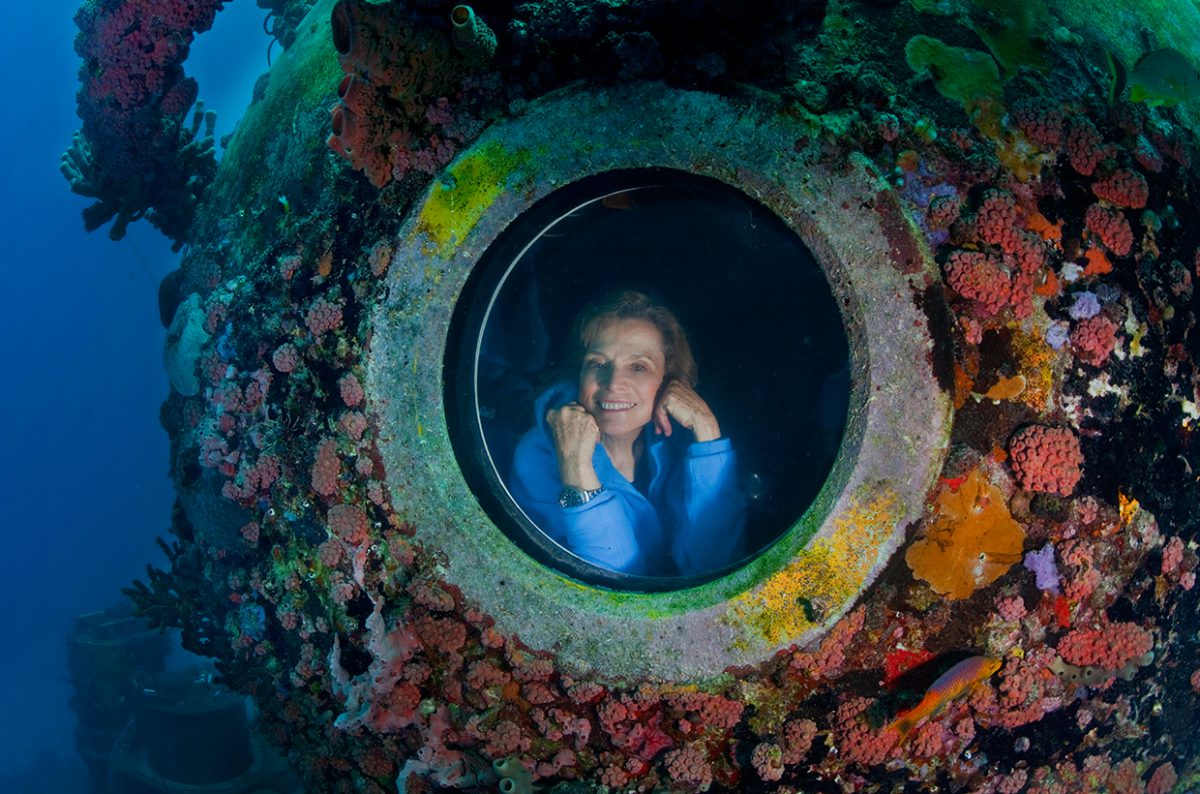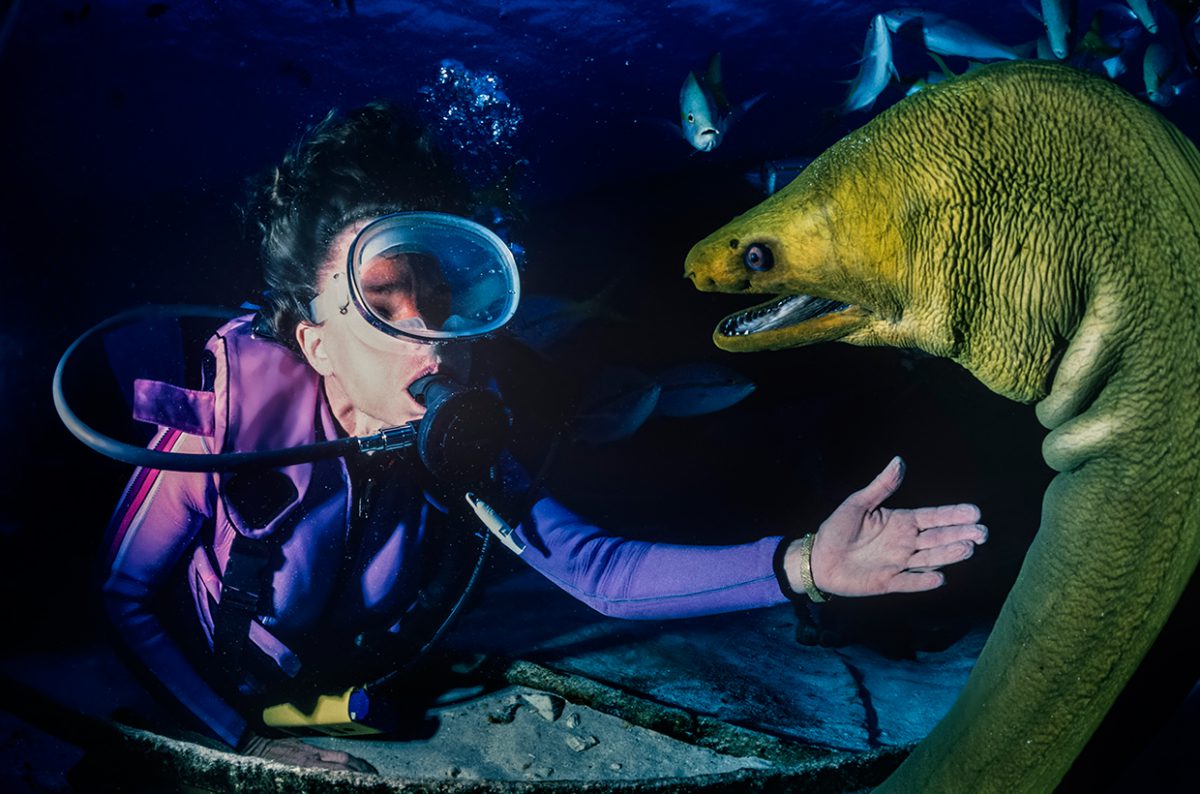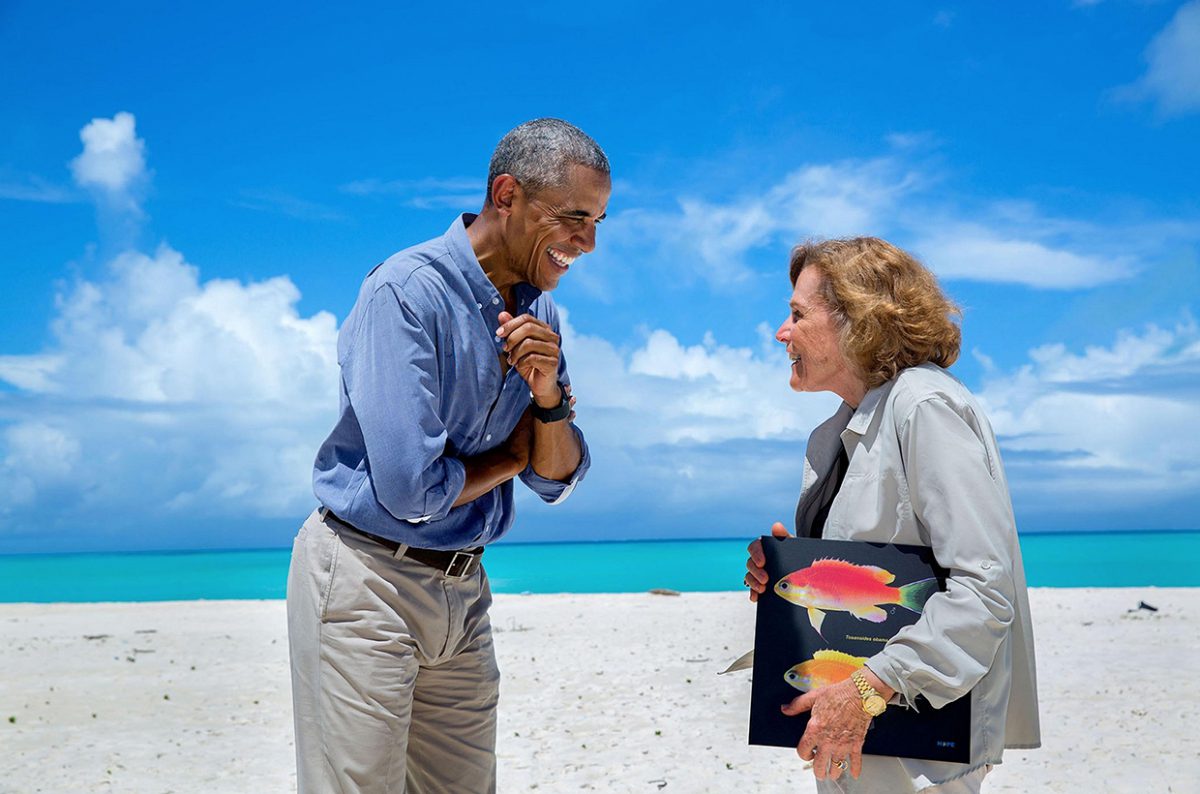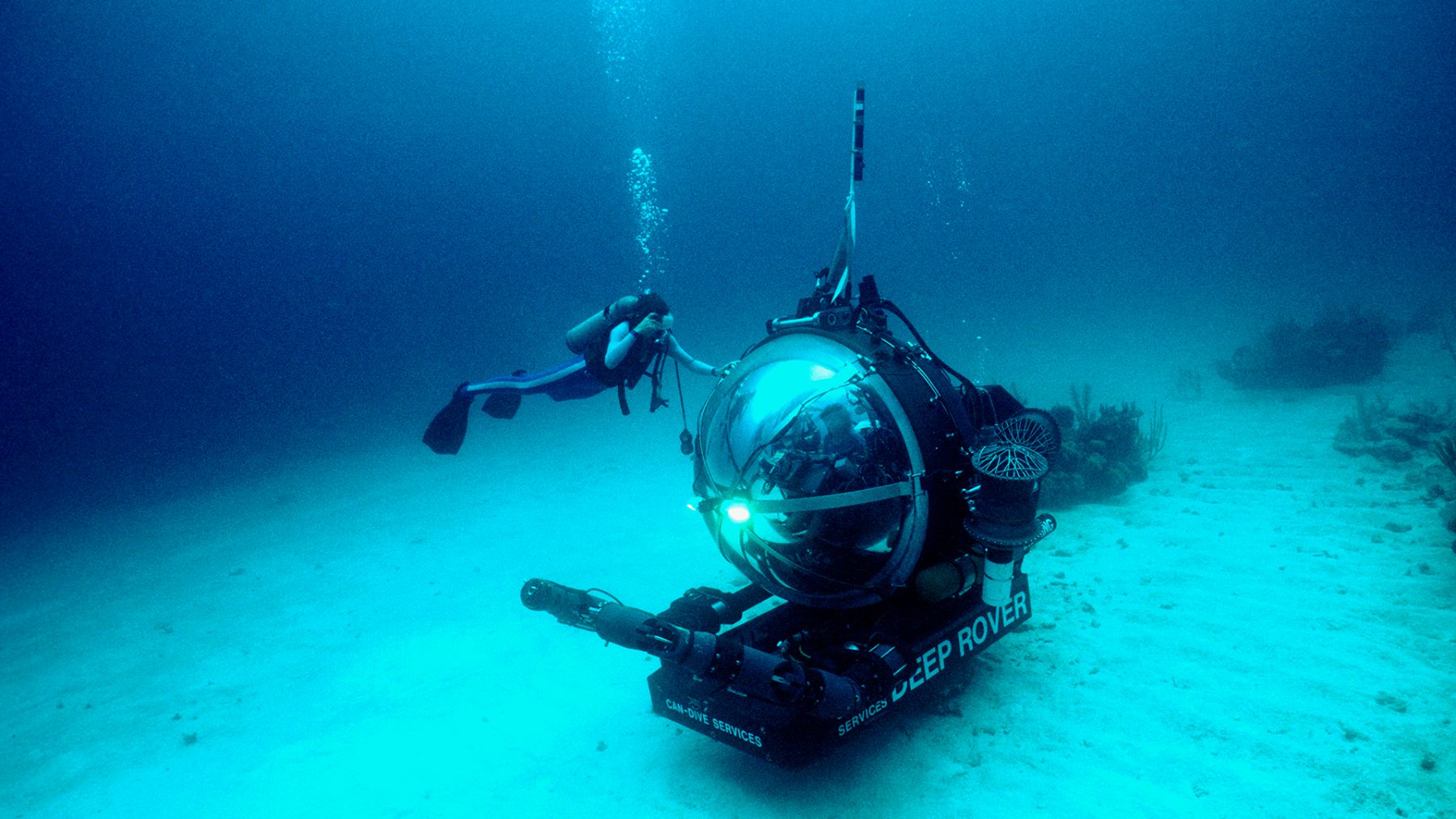Silvia Earle by Steffi Kammerer | 4th June, 2021 | Personalities
Sylvia Earle is the guardian angel of the oceans. The famous marine scientist has dedicated her life to their protection and, at 85, is going stronger than ever. Her message: The time is now! Because our survival depends on it.
“Treat the ocean as if your life depends on it, because it does.” SYLVIA EARLE
She’s as skilled an oceanographer as she is a compelling storyteller. And she packs her message in soundbites that stick in the mind like slogans.
“No water, no life. No blue, no green,” says Sylvia Earle, summing up her life’s work. And, even more succinctly: “No ocean, no us.” To drive her message home, she admonishes: “Treat the ocean as if your life depends on it, because it does,” adding that the ocean supplies half of the oxygen we breathe and more carbon is captured in its depths than anywhere else on earth. We don’t have much time left to take action! She then fleshes out her stark message, explaining that in the last 50 years more than 90 percent of the big fish in the oceans have vanished, highlighting how important sharks are for the entire ecosystem, and what a central role the coral reefs play. “But we’ve already lost half of all the world’s reefs.” With dire precision, she lists the incredible destruction that we have wreaked in just a single generation. Earle is in a better position to judge this than most, having seen with her own eyes just how much life under the surface has changed in the past decades. She points out that most swordfish now no longer live long enough to breed: “Eating these fish is like eating the last Bengal tigers!”
“Eating swordfish is like eating the last Bengal tigers.” SYLVIA EARLE
Her unadorned truths helped the oceans in 2006, when the American marine scientist, easily the most famous oceanographer of her generation, found herself sitting next to then U.S. president George W. Bush at a dinner. Sylvia Earle seized the opportunity. Bush, who really hadn’t struck many people as being particularly interested in environmental protection, listened to her. She said: “If the fishermen are to survive, they need fish,” and went on to explain that the fish needed protection zones because otherwise there wouldn’t be any fish left. Soon after, Bush stunned not just his critics by creating what was then the world’s largest marine conservation area off the coast of Hawaii: Papahanaumokuakea Marine National Monument. At the signing ceremony, the president said that Earle had given him “a pretty good lecture about life.” The designated area was 140,000 square miles or, as Bush put it, an area one hundred times larger than Yosemite National Park. In 2009, during his last days in office, he expanded it by 150 percent. Seven years later, his successor Barack Obama quadrupled the size of the protected area.
From a very early age, Sylvia Earle knew that she wanted to become a scientist. She gained her doctorate from Duke University with a thesis on algae. The 85-year-old has spent over 7,000 hours of her long life underwater, more than nine months in total. She has been in scary situations, like being surrounded by dozens of sharks, and still had only one desire: to return to the unexplored depths of the ocean, even deeper into the darkness, to places where no one had been before her. “Onward and downward,” is how she describes her driving force. In 1979, she donned a diving suit that looked like it had been designed for the moon, and plunged over 381 meters without a tether, a feat that remains an unbroken world record. She remained on the seabed for two hours on her own.
Earle was three years old when she first encountered the ocean. While visiting a New Jersey beach with her parents and her brothers, she was knocked over by a wave. “The ocean certainly got my attention!,” is how she describes what could have been an enduring shock. When she was 12, the family moved to Florida, and the Gulf of Mexico became her backyard. She has led more than 100 expeditions over the course of her career, written more than a dozen books – and was a pioneer in everything she did. Astonishingly, she also had time for a personal life, was married three times and has three children.
In 1964, she took part in an expedition – as the only woman in a group of 70 men. Six years later, she remained underwater for two weeks, leading a group of five female researchers in a laboratory situated at a depth of 15 meters. This was a first: There had never been female aquanauts before, and even the first female astronauts were only admitted into the training programs eight years later. The media pounced on the female crew, christening them “Aquababes,” “Aquachicks,” and “Aquanaughties.” Chicago threw them a celebratory ticker-tape parade on their return.
Sylvia Earle was the first woman to be appointed chief scientist of the National Oceanographic Administration in Washington, D.C., and she was featured on the cover of Time magazine in 2017. “Mission Blue,” the Netflix documentary about her life and her commitment to the oceans, has been watched by millions, and she’s an idol for countless young activists and scientists.
Earle lives in Oakland, in San Francisco Bay, and still dives. She holds lectures for schoolchildren and UN delegations, tweets and makes sure her warnings are heard. Of course, she also has her own Instagram account with more than 13,000 followers, despite having only published five posts so far. She founded two companies, the most recent of which has been operating for nearly 30 years and manufactures mini submersibles. As a diver, Earle knows best how a mechanical gripper arm needs to be designed to work effectively in the inky depths of the ocean. With her former husband, the British engineer Graham Hawkes, she designed the Deep Rover submersible, which can reach depths of up to 1,000 meters.
In 2009, Sylvia Earle held a widely acclaimed TED Talk, in which she warned that the next decade would determine the fate of the next 10,000 years. She won the annual TED Prize, which came with a grant of 100,000 dollars. The award recognizes a wish to change the world. Earle’s wish was to give the ocean as much protection as the land. She used the prize money to set up a foundation, Mission Blue, and started working with a global coalition of over 200 partners to designate Hope Spots – marine protected zones that are scientifically identified as critical to the health of the ocean and its inhabitants. These areas, which include roughly 17,000 kilometers of coastline around New Zealand, have a particular abundance of species. There are presently more than 300 Hope Spots worldwide.
When Earle held her TED talk, only one percent of the ocean was protected. That figure is now six percent. With the help of her Hope Spots, ocean savior Earle hopes to raise that to 30 percent by 2030.









